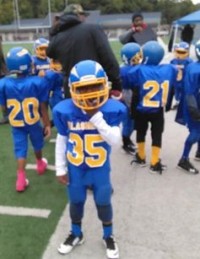
A couple of years ago I listened to a heart-rending interview on NPR with Joe Ehrmann, former NFL football player and founder of Coach for America. I’d been the mother of a hockey player for more than a decade and was moved by Ehrmann’s call for transformational rather than transactional coaching. Like many parents, I found myself wishing there’d been more of that in our family’s experience. But my interest was more than personal. I’d been following developments in Internet safety even longer than I’d been a hockey parent, and the coach’s message showed me what had been missing in online safety education too.
Since the beginning of the field, about two decades ago in the U.S., the messages have been transactional: Do this (think, post, pause, block, monitor, etc.) and you or your kid will be able to stay safe, avoid danger, know what’s being posted, protect a reputation, get into college, keep your job, etc., etc.), right?
Transformational goes better with social
Nothing inherently wrong with that; it’s good to consider possible outcomes. It’s just that the focus is narrow, more about the best deal people can make for themselves than how their actions affect others and their communities. It’s not transformational. It’s not even social. It doesn’t fit the very social nature of the media environment we’re talking about. Like in our homes and schools, we’re co-creators of and participants in our communities in social media.
Thinking about the potential outcomes for oneself is what research at the Harvard School of Education called “consequence thinking.” It’s the first level of thinking in the GoodPlay researchers’ framework for digital ethics. The other two are moral thinking (about impacts of one’s actions on people we know and love) and ethical thinking (impacts on one’s community – people we don’t know).
Simply logically, wellbeing in social media is on solid ground when it’s based on the full range of thinking: consequence, moral and ethical. Because wellbeing in a social environment is, well, social! A participant’s actions can’t affect only him or herself because – in social media – the person doesn’t operate in a vacuum. It’s a lot more like a fishbowl, right?
Transforming bystanders
So consider the possibility that wellbeing in social media naturally resonates more with transformational teaching, parenting and coaching than the transactional kind. It might start at the transactional level: e.g., “what goes around comes around” (2007 research found that aggressive behavior online more than doubles the aggressor’s risk online). But if behavior in social media makes things better for you, it can make things better for all who witness it (of course the opposite can be true too), better for your whole community. To use the language of bullying prevention, encouraging bystanders to be upstanders is good for the whole peer group online or offline. Because we know from the research that social cruelty affects everyone involved – aggressor, target and witnesses. Turning that around, which upstanders can do, has the same effect.
This is true digital citizenship – digital leadership, in fact. It builds on the social literacy skills that help our kids navigate social situations skillfully and respectfully in digital as well as physical spaces. It’s the kind of behavior that changes things, that spreads hope and encouragement. It’s transformational.
Online as well as on the ice or turf
And it’s a simple decision we make and help our kids make day after day. Coach Ehrmann gave NPR a great example:
When I played football, I hated [when] some kid would get a knee injury. Your teammate would go down and that coach would say, ‘Move the practice down 20 yards” and leave that kid laying there…. As coaches, we can kneel down next to that kid, you affirm the tears, the pain, the emotions, and you bring all the team around to say, ‘How can we help Bobby? He’s one of us; he’s done so much. He has so many dreams.’ So, you teach them how to build authentic community” as members of a community who care for each other.
That’s teaching – maybe even inspiring – by modeling emotional safety and community. It’s done in communities of guided practice: in digital spaces as well as families, classrooms, playing fields and hockey rinks. It’s done together.
So tell me, how can we engage, much less inspire, young users, bystanders and citizens if we don’t go beyond transactional to transformational? Tweet or comment if this makes sense to you!
Related links
- A great example of how to make digital citizenship and safety transformational: #iCANHELP (I know I’m biased)
- An example of how to make bullying prevention transformational: the ENABLE program in Europe, combining student leadership, social literacy and bullying prevention
- About Digital citizenship’s missing piece (essential to all citizenship anywhere) – if we want it to be transformational, it has to have this
- My review of Disconnected: Youth, New Media, and the Ethics Gap My review, by Carrie James at the Harvard School of Education. Published by MIT Press last year, the book was the result of six years of surveys and interviews with tweens, teens and young adults by the 14 researchers of Harvard University’s Good Play Project.
- “The 2 scariest words a boy can hear”: NPR’s interview with Joe Ehremann
- “All kids deserve the safety & other benefits of social-emotional learning”

[…] Transformational – not just transactional – Net safety & citizenship needed – … […]